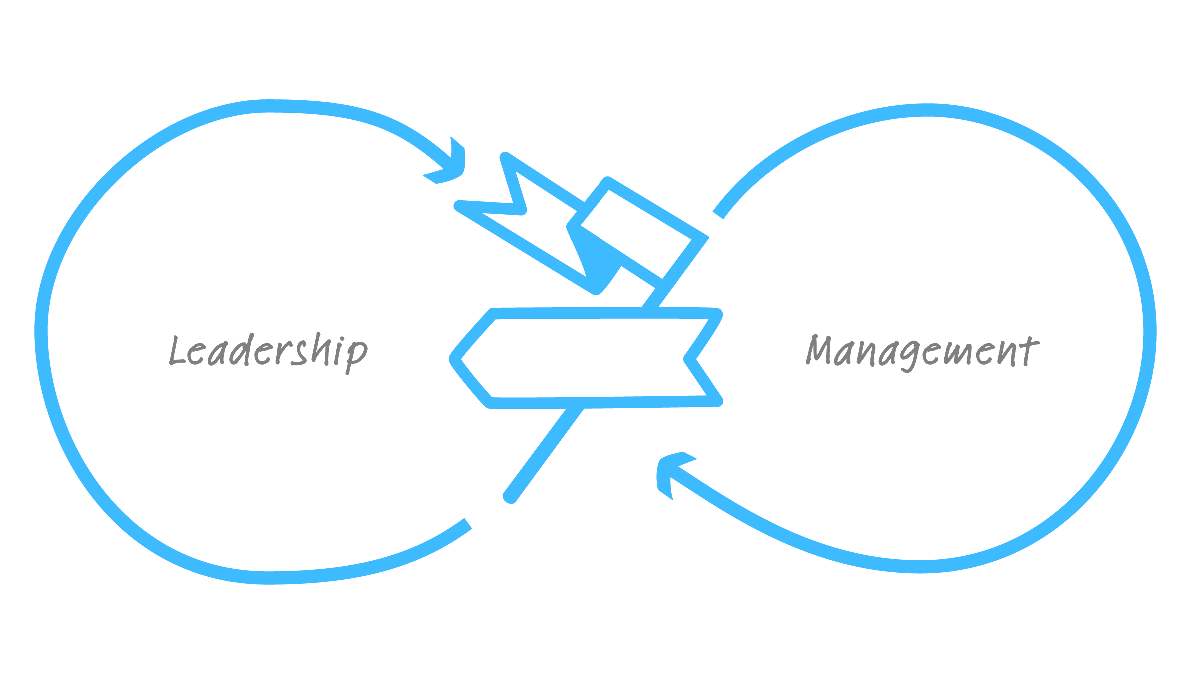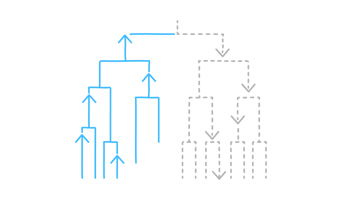Management and leadership have often been viewed as contrasts. In this blog post we discuss two key commonalities between the two concepts that allow for a more productive approach towards organizing.
Management without leadership is disheartening or discouraging.
And leadership without management is disconnected.— Henry Mintzberg
Ever since Abraham Zaleznik’s classic Harvard Business Review article “Managers and Leaders: Are they different?”[i], the contrast between management and leadership has been subject to debate.
Sometimes the two roles have been seen as complementary, with the understanding that leaders are more people-oriented and managers are more focused on processes and structures.
Sometimes authors have constructed a hierarchy, e.g. with leaders setting the strategic vision and managers executing it (implying something of a polemic against those who are “only managers”), or with managers setting the larger organizational frame and leaders harnessing relationships on the micro level in smaller teams and units.
Two key commonalities of management and leadership
Whether complimentary or hierarchical, the distinction generally raises the question of whether one person can be a good leader and a good manager at the same time.
A follow-on question is whether there are personality traits that make it more likely to become one or the other – and in all fairness, this question is more often raised in connection to leadership.
Define your leadership development strategy
In order to be transparent, we at Management Kits believe in the complementarity of the two concepts, as encapsulated in the Mintzberg quote above. Leadership and management are two sides of the same coin, and in their complementarity they have two key things in common.
1. Learning
First, both can be learned. You are neither a “natural leader” nor a “managerial type” based solely on your personality, but you can develop the skills and practices required to succeed in both organizational functions.
How do you learn these skills? Some theory and conceptual training may help, but both leadership and management development essentially happens through practice – the world’s most effective business school. No meaningful progress in the developmental journey towards managerial or leader effectiveness can be made without first-hand, lived experiences. And the more effective the framework and support processes allowing for feedback and reflection, the better.
2. Context
This points to the second parallel between leadership and management: in order to be effective and yield impact, they heavily depend on the organizational context in which they are practiced and the level of support provided to leader and manager development.
A rigid and inflexible organizational structure, for example, will not leave much room for leader-follower networks to start initiatives and instigate change.
And effective management in an organization is very dependent on preconditions largely beyond the control of the individual manager. In short, effective leaders need to know how to manage – and effective managers must build relationships that allow them to lead within, as well as beyond, organizational structures.
Integrating both the organizational and the individual level of leadership development is one of the key ideas behind the Leadership Development Kit.
Boost your organizational effectiveness
with Management Kits
[i] Zaleznik, A. (1977). Managers and leaders: Are they different? Harvard Business Review, 55(May-June), 67-78.



